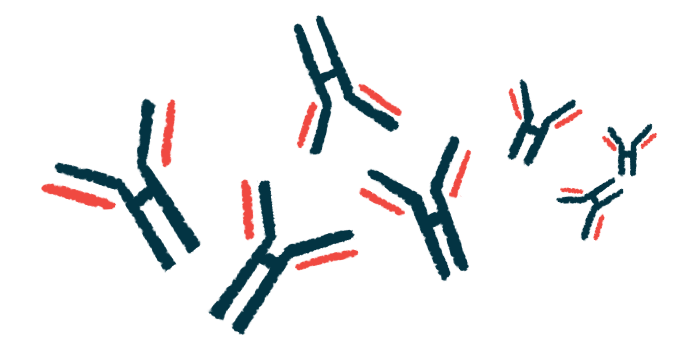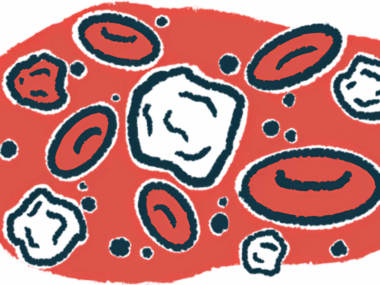New study data may help explain EBV and MS link
Research into CRYAB protein shows how EBV infection may trigger MS
Written by |

When the immune system launches an attack to fight off infection with the Epstein-Barr virus, immune cells can accidentally end up targeting a protein called CRYAB that’s normally expressed by healthy myelin-making cells in the brain, a study found.
The findings provide further evidence that molecular similarities between distinct proteins may explain the known link between the Epstein-Barr virus, known as EBV, and multiple sclerosis (MS).
“MS is an incredibly complex disease, but our study provides an important piece in the puzzle and could explain why some people develop the disease,” Olivia Thomas, PhD, a postdoctoral researcher at the Karolinska Institutet and co-author of the study, said in a press release.
“We have discovered that certain antibodies against the Epstein-Barr virus, which would normally fight the infection, can mistakenly target the brain and spinal cord and cause damage,” Thomas added.
The study, “Cross-reactive EBNA1 immunity targets alpha-crystallin B and is associated with multiple sclerosis,” was published in Science Advances.
Link seen between MS and immune system fight against EBV
EBV is best known for causing infectious mononucleosis, commonly known as mono — an illness marked by swollen lymph glands, fever, sore throat, and extreme fatigue, which can last for 1-2 months.
But the virus also often causes non-serious infections during childhood, which may not even be diagnosed as Epstein-Barr. Most people are infected with EBV at some point in their lives and the majority experience only mild to no symptoms.
In MS, the immune system launches an inflammatory attack that targets healthy cells in the brain and spinal cord. In recent years, studies have shown that infection with EBV is a potent risk factor for MS, though the reason for this association remains incompletely understood.
One probable idea is that, when the immune system tries to fight off the EBV virus, it may accidentally end up targeting brain cells. This phenomenon, in which an antibody targets more than one different molecule, is known as cross-reactivity.
Consistent with that idea, another study published last year showed that an EBV protein called EBNA1 has a similar structure to a brain protein called GlialCAM. When immune cells make antibodies targeting the EBV protein, they sometimes also will stick to the structurally similar GlialCAM protein, triggering an immune attack against healthy brain cells carrying the protein.
Structural studies have suggested that, in addition to GlialCAM, the EBV protein EBNA1 also has a similar shape to another brain protein called CRYAB. This protein is found mostly in oligodendrocytes — specialized cells in the brain and spinal cord responsible for making myelin, the fatty covering around nerve fibers that is damaged in MS.
To learn more, researchers now tested the idea that cross-reactivity between CRYAB and EBNA1 also might also play a role in MS.
Testing for antibodies with link to both EBV and MS
First, the team analyzed blood samples from 713 people with MS and 722 people without the disease, looking for antibodies against the CRYAB protein. The individuals without the disease, who served as controls, were matched to patients for sex, age, and geographic location.
While most people in both groups did not have any detectable antibodies against this protein, the rate of patients positive for anti-CRYAB antibodies was markedly higher — by nearly twofold — among those with MS.
Up to about 1 in 4 MS patients were positive for anti-CRYAB antibodies. Interestingly, there was no apparent association between the presence of these antibodies and patients’ age, sex, or MS type.
“This shows that, whilst these antibody responses are not required for disease development, they may be involved in disease in up to a quarter of MS patients,” Thomas said.
All MS patients who had antibodies targeting the specific region of the CRYAB protein that shares a structural similarity with EBNA1 also were positive for antibodies targeting the viral protein — and analyses were consistent with the idea this could be because of cross-reactivity.
Indeed, statistical analyses suggested that patients positive for antibodies against both proteins were nine times more likely to have MS.
The researchers next conducted mouse experiments to examine the response of T-cells, a type of immune cell with an important role in driving MS. T-cells have protein receptors that, similar to antibodies, will bind to a specific molecular target. That means that, when the receptor binds its target, it triggers the cell to attack.
In these experiments, the researchers immunized mice with either CRYAB or EBNA1. In essence, the mice were given a vaccine against either protein, with the goal of triggering an immune response against the protein. The results showed that mice immunized with CRYAB were positive for T-cells with receptors that targeted EBNA1, and vice versa, again consistent with cross-reactivity.
Researchers also look to link between T-cells and MS, EVB
In a final analysis, the researchers tested T-cells in blood samples from 25 people with MS who had never received treatment for the disease, as well as 59 patients treated with Tysabri (natalizumab), an approved MS therapy designed to prevent inflammatory immune cells from entering into the brain. Samples from 19 healthy controls and 20 people without neurological disease also were included for comparison.
These results showed that, compared with the other groups, MS patients treated with Tysabri had notably higher levels of T-cells against CRYAB or EBNA1. However, no differences were seen in T-cell responses to other molecules.
This [study] provides further evidence regarding the mechanistic link between EBV infection and MS.
“We could not detect increased T cell responses to CRYAB in untreated pwMS [people with MS]; it was only observed in natalizumab-treated pwMS,” the researchers wrote.
A potential explanation for this finding, they said, is that CRYAB-targeting T-cells might normally migrate into the brain in MS, so they aren’t detectable in patient’s blood without treatment that blocks their movement.
Collectively, this study “demonstrates that CRYAB autoreactivity is cross-reactive with EBNA1 due to molecular mimicry, likely a result of EBV-targeted immunity,” the researchers wrote.
“This [study] provides further evidence regarding the mechanistic link between EBV infection and MS,” the team concluded.







